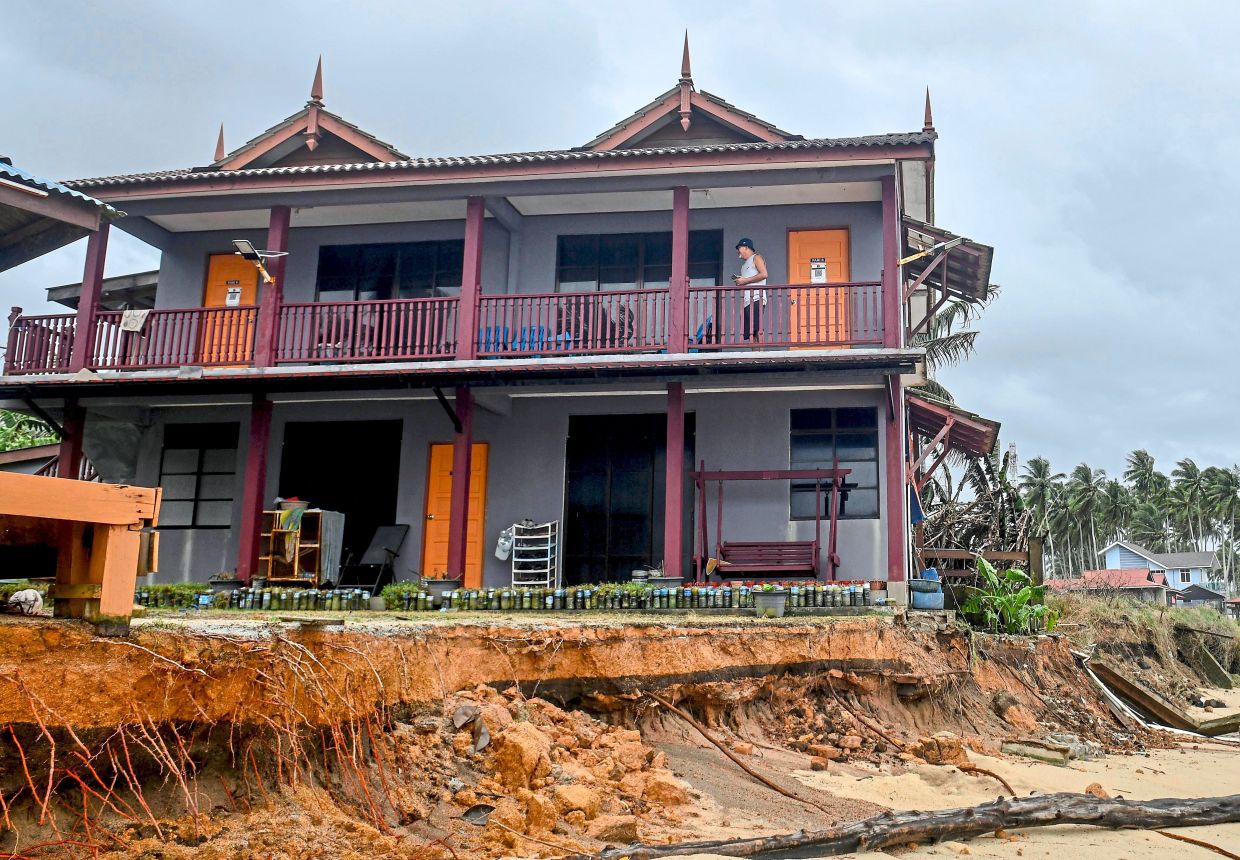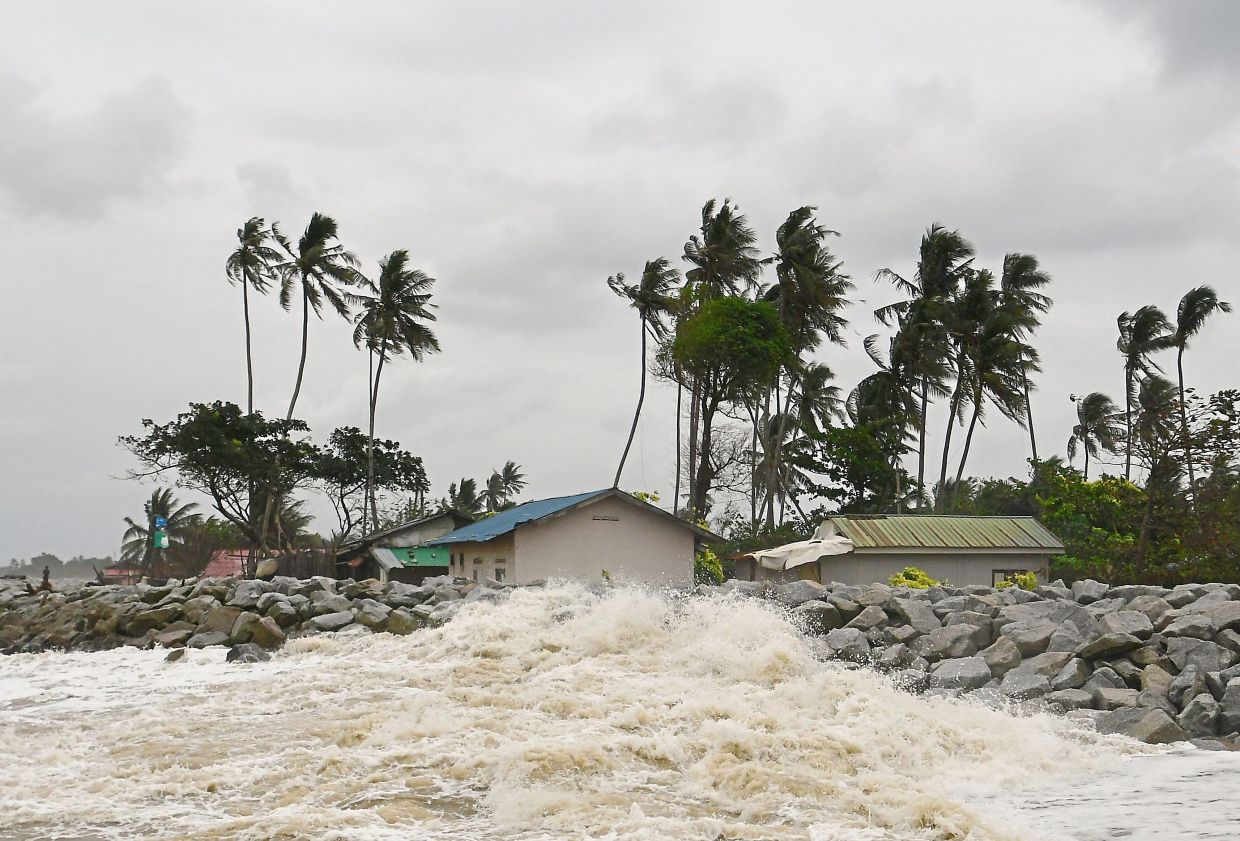PETALING JAYA: Malaysia could potentially lose its beautiful beaches if coastal erosion continues at its current rate, says an ecotourism group.
Ecotourism and Conservation Society Malaysia (Ecomy) president and chief executive officer Andrew Sebastian said tourists that visit Malaysia for its sandy beaches will not be able to enjoy it any more as some coastlines were facing serious erosion.
“In Penang, a lot of popular beaches are heavily eroded, making it difficult to be used as a tourist attraction.
“Same goes to some areas in Johor such as Pulau Kukup and Tanjung Piai,” he said, adding some areas in Langkawi are also facing similar issues.
He said that the erosion would also endanger state parks in Selangor as well as the areas in the east coast of Peninsular Malaysia.
Andrew called for serious action plans to mitigate the issue by addressing the real threat of climate change.
“Moving forward, the government has to be serious about the consequences of climate change.
“And we need to play our role to mitigate such impact including coastal erosion as it would affect our natural resources and products,” he added.
According to Tourism Malaysia’s 2019 annual report, 26.9% of tourists that came to Malaysia during the year engaged in visiting islands and beach activities.
The National Coastal Erosion Study 2015 also reported that 15% of 8,840km of shoreline is currently eroding, with one-third of those falling under the critical and significant categories that require structural protection.
According to the National Coastline Physical Plan, Perak is leading the list of states with the most eroded shoreline, with a total area of 95.1km, followed by Selangor at 74.6km, and Pahang at 61.8km.
The plan also revealed that 20,670ha of land will be affected by rising sea levels in 2030.
A research entitled “Coastal Structures as Beach Erosion Control and Sea Level Rise Adaptation in Malaysia: A Review” has found that the coastline of Malaysia is exposed to threats of erosion, especially during monsoon seasons.
The east coast of Peninsular Malaysia and the west coast of Sabah and Sarawak are exposed to higher wave and wind impact, which affect natural beach processes during the North-East Monsoon, it added.
Climate expert Prof Datuk Dr Azizan Abu Samah said the north-east monsoon wind speed in the South China Sea has increased and contributed to stronger waves that aggravated coastal erosion since the 1990s.
“The main issue of coastal erosion is wave or current, both which are very much controlled by tides and wind.
“The other aspect of coastal erosion has to do with coastal structures such as land reclamation that may change the current flow and sediment transport direction. One section of the coast is eroded while another section of the coast increases due to deposition,” he told The Star.
He said shoreline erosion would then lead to negative implications on livelihoods of the people living and relying on socioeconomic activities by the coast.
“Coastal erosion impacts on tourism since it erodes the beach and also brings the sea to the resort doorstep, and also some may find that their land is now about 100ft (30.4m) in the sea, such as in Pulau Sabak, Kelantan,” he added.
He also said that the erosion would indirectly affect fishing activities as some fishermen’s settlements were located near the sea.
Aside from the peninsula’s east coast, Azizan also said regions facing the South China Sea in the Bornean states would be similarly affected.
“A wide swath of coast facing South China Sea is now at a higher risk of increased erosion during the north-east monsoon,” he added.
While beach erosion was mainly caused by natural phenomena, Environment Protection Society of Malaysia executive committee member Randolph Jeremiah said it could also be influenced by human activities.
He said that the natural processes of monsoon affecting the shoreline can be interrupted by land reclamation, dredging, and other construction activities along the coastline. - Star





No comments:
Post a Comment
Note: Only a member of this blog may post a comment.